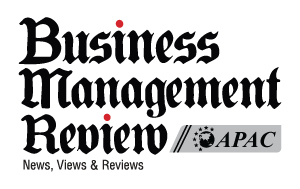BUSINESSMANAGEMENTREVIEW.COMDECEMBER 20249execution of the mission's primary goal are crucial, regardless of challenges, distractions, or changing circumstances. Now, consider applying this concept to the corporate battleground of sustainability. As business leaders, you navigate through environmental and social responsibility, not just for compliance but to gain a decisive competitive edge. We identified four maturity levels on how organizations prepare and drive their sustainability underpinned by the principles of relative superiority. The goal is to increase organizational maturity, revolutionize your sustainability strategy, and propel your organization to greater heights. LEVEL 1: AWARENESS AND COMPLIANCE Initially, companies approach sustainability from a compliance perspective, focusing on straightforward initiatives like reducing energy consumption that meet regulations and cut costs. At this stage, the principles of relative superiority of security, repetition, surprise, speed, and purpose are underdeveloped. Leadership is primarily compliance-oriented, viewing sustainability as a regulatory necessity rather than a strategic opportunity. The next step involves broadening the sustainability strategy to integrate it as a core business function. LEVEL 2: INTEGRATION AND COMMITMENT As companies progress, they begin to weave sustainability more deeply into their operations, addressing broader environmental impacts, including Scope 3 emissions. This stage sees an increase in the application of the repetition principle, ensuring sustainability practices are consistently integrated into business processes. However, opportunities exist to enhance simplicity, speed, and surprise. Simplifying processes can better align sustainability goals with business operations while increasing speed in adopting innovations can provide a competitive edge. Leadership actively champions sustainability, shifting focus towards creating a sustainable supply chain and reducing overall environmental impact. The next step is setting more ambitious, science-based targets and fostering a culture of innovation and collaboration. LEVEL 3: INNOVATION AND LEADERSHIP At this advanced stage, companies lead in sustainability, setting ambitious Net Zero Targets and driving innovation. They quickly adapt to trends and introduce cutting-edge solutions, embodying the principles of speed and surprise. Leadership is visionary, motivating teams and stakeholders towards a sustainable future. The next phase involves leveraging their leadership to instigate industry-wide change, promoting sustainability globally, and forming partnerships that magnify their impact. LEVEL 4: TRANSFORMATION AND NET POSITIVITY Here, companies strive for a net positive impact, influencing their operations, the entire industry, and the global economy. They operate with a clear purpose and ensure long-term security and resilience, making substantial contributions to both the environment and society. Leadership at this level uses its influence to foster global sustainable practices. The focus is on creating a ripple effect of innovation and sustainability, and the next step is sharing knowledge and best practices widely and inspiring others to join the sustainability report. CONCLUSION Adopting relative superiority principles in sustainability strategies allows businesses to tackle environmental and social responsibilities with the agility and innovation typical of Special Forces operations. As organizations move through different maturity levels, visionary leadership becomes crucial in integrating these principles deeply into the corporate fabric. This strategic approach enhances your company's sustainability performance and positions it as a leader in fostering a sustainable future. LEADERSHIP IS PRIMARILY COMPLIANCE-ORIENTED, VIEWING SUSTAINABILITY AS A REGULATORY NECESSITY RATHER THAN A STRATEGIC OPPORTUNITYHans Weemaes
< Page 8 | Page 10 >
< Page 8 | Page 10 >


